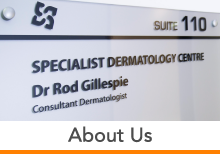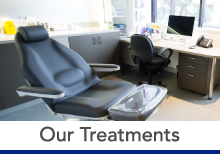Rosacea is a common skin disorder usually affecting patients over the age of 40 which can also occur during younger years.
It is characterised by:
- A tendency to flush with associated erythema, telangiectasia ('broken capillaries') and papulopustular lesions.
- It is said to occur most commonly in patients with a Celtic background although other races may also be affected.
Common precipitating factors are:
- Heat.
- Hot drinks and hot spicy foods.
- Alcohol.
- Sun exposure.
These factors exacerbate rosacea by increasing the intensity of erythema but not necessarily by increasing the number of papulopustular lesions.
The central face is most commonly affected although extra facial rosacea can also occur.
Ocular rosacea may result in conjunctivitis whilst phymatous rosacea causes swelling of the nose and sometimes other parts of the face.
Treatment:
- Laser treatment.
- Treatment is largely aimed at avoidance of the precipitating factors.
- The use of topical therapy is used in milder cases.
- The use of tetracycline antibiotics is used in more severe cases.
- Occasionally isotretinoin, a vitamin A-derived treatment used for teenage acne, may also play a role in alleviating the symptoms of rosacea.
- Persistent redness and telangiectasia may be treated with intense pulsed light or a vascular laser.
- Hydrocortisone 1% cream may be used temporarily to alleviate inflammation, however stronger topical steroid creams should be avoided as they have a tendency to exacerbate rosacea. They can also cause rosacea in their own right (steroid rosacea).
- Perioral dermatitis, often appearing as a result of inappropriately strong topical steroid use, is not directly related to rosacea.


